Erin, 25, Space enthusiast, science fashionista, and 3D printing fan. Currently Watching: Brooklyn 99, Kora, Good Omens Currently Reading: The Expanse Series
Don't wanna be here? Send us removal request.
Text
It's with a heavy heart I announce that Sci Chic will be shutting down by the end of the year. The past 5 years(!) of running this business has been amazing, opened tons of new doors, and helped me meet some incredible people like you! But now it's time to move on to new things. To clear out the extra subscription boxes and necklaces that have been filling my closet for the past 5 years.
My career has been shaped and steered by Sci Chic and the community around it.
To help us go out with a bang, grab yourself some science fashion and gifts for the last time at a MAJOR discount, including some never before listed items! All these sales will go towards our close down costs and will help fund the next projects on my radar (social media and writing projects galore)! https://scichic.com/collections/





Thanks for helping us spread the fashionable side of science.
-Erin
13 notes
·
View notes
Text
Space toilet, Radishes, and a Spacewalk in Virtual Reality
A rocket is launching to the International Space Station next week, carrying tons of science and supplies to the orbiting laboratory. It’s Northrop Grumman’s 14th (NG-14) commercial resupply cargo mission, and includes plant research, a new space toilet, and a special virtual reality camera designed to immerse you in a spacewalk. Let’s take a closer look at what’s on board, and how you can ask some of the scientists anything.

A new way to “boldly go” in space

A new space toilet is heading to the space station. It’s smaller than the current toilets aboard the station, and includes a 3D printed titanium cover for its dual fan separator. These are just some of the upgrades that make it better suited for our deep space exploration missions. Engineers also gathered feedback from astronauts and set out to design more comfortable attachments that would make “boldly going” in space a more enjoyable experience. The toilet is being tested on the space station, and will also be used on a future Artemis mission. The new design will allow us to increase how much water we recover for use, because yep … yesterday’s coffee becomes tomorrow’s drinking water. See below for an opportunity to speak with the folks who made the new space toilet happen.
Space plants are rad(ish)!

Astronauts traveling to the Moon and Mars will need to grow food to supplement their diets. The latest in plant studies aboard the space station hopes to pack a crunch in that research. We’ll be growing radishes in a special plant chamber, and learning how light, water, atmosphere, and soil conditions affect the bulbous vegetables. Radishes are nutritious, grow quickly (roughly four weeks from sowing to harvest), and are genetically similar to Arabidopsis, a plant frequently studied in microgravity. What we learn could help optimize growth of the plants in space as well as provide an assessment of their nutrition and taste. See below for an opportunity to ask anything of the scientist and engineer behind this new crop.
Immerse yourself in a spacewalk

If going to space is on your bucket list, you might be closer than you think to checking that box. Felix & Paul Studios is creating an immersive 360 virtual reality film of a spacewalk that will put you right next to the astronauts as they go about their work on the outside of the space station … at 17,500 miles per hour. The new camera, specially designed to withstand the incredibly harsh environment of space, will be mounted on the station’s robotic arm so it can be maneuvered around the outside of the space station. Félix Lajeunesse and Paul Raphaël are the co-founders of the immersive entertainment studio, and have been producing a film aboard the space station – from Earth – for more than a year already. See below for a chance to ask them anything about what filming in space takes.

You can join in the NG-14 Reddit Ask Me Anything on Friday, Sept. 25 to ask anything of these folks and their projects. Here’s the schedule:
Space toilet (a.k.a the Universal Waste Management System): Melissa McKinley with NASA’s Advanced Exploration Systems and Jim Fuller of Collins Aerospace, and program manager for UWMS at 12 p.m. EDT at https://www.reddit.com/r/space.
Radishes in space (a.k.a. Plant Habitat-02): Dr. Karl Hasenstein is the scientist behind the Plant Habitat-02, and Dave Reed knows the ins and outs of the Advanced Plant Habitat of the space station. Their Reddit AMA begins at 3 p.m. EDT at https://www.reddit.com/r/gardening.
Virtual reality spacewalk camera: Félix Lajeunesse and Paul Raphaël co-founders and creative directors of Felix & Paul Studios will be taking questions at 5 p.m. EDT on https://www.reddit.com/r/filmmakers.
youtube
These are just a few of the payloads launching aboard the NG-14 Cygnus cargo vehicle to the space station next week. Read about the cancer research, and new commercial products also heading to space and watch the video above to learn more. Launch is targeted for Tuesday, Sept. 29, with a five-minute launch window opening at approximately 10:26 p.m. EDT. Live coverage begins on NASA TV at 10 p.m. EDT.
Make sure to follow us on Tumblr for your regular dose of space: http://nasa.tumblr.com.
923 notes
·
View notes
Text
It’s been an amazing experience to be a part of the team that created this series!
The team of researchers we followed for two years(!) accomplished something truly incredibly, and it is an honor to share it with you all. :)
Sending Science to Space (and back) 🔬🚀
This season on our NASA Explorers video series, we’ve been following Elaine Horn-Ranney Ph.D and Parastoo Khoshaklagh Ph.D. as they send their research to the space station.
From preparing the experiment in the lab….

To training the astronauts to perform the science…
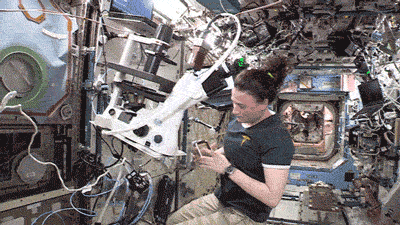
To watching it launch to space…

To conducting the science aboard the space station, we’ve been there every step of the way.

Now you can follow along with the whole journey!
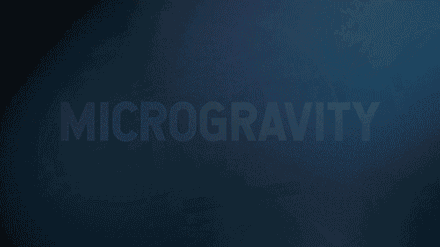
Binge watch all of NASA Explorers season 4: Microgravity HERE
Want to keep up with space station research? Follow ISS Research on Twitter.
Make sure to follow us on Tumblr for your regular dose of space: http://nasa.tumblr.com
589 notes
·
View notes
Text
Science in space
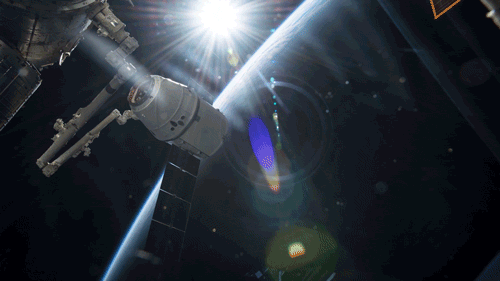
This week on NASA Explorers, we’re aboard the International Space Station!
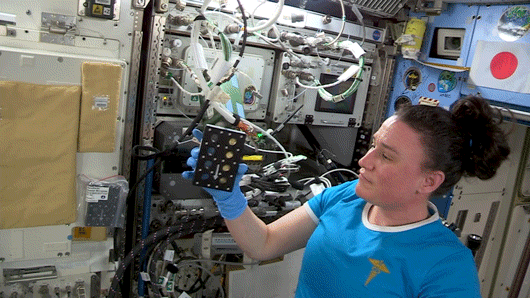
Now that our scientists’ experiment has made it to space, it’s time to see how their samples behave in microgravity.

See how astronauts conduct science in space, while a team back here on Earth conducts their own piece of the project. Watch the episode here:
youtube
Follow NASA Explorers on Facebook to catch new episodes of season 4 every Wednesday!
Make sure to follow us on Tumblr for your regular dose of space: http://nasa.tumblr.com
645 notes
·
View notes
Text
All aboard for the International Space Station!
Before research can get on a rocket to head to space, it is carefully prepared at Kennedy Space Center.

Scientists sometimes spend days, or even weeks, doing all of the last-minute preparations to get their investigation ready for microgravity.

This week on NASA Explorers, we follow a team of researchers in the final days before their experiment gets loaded into a SpaceX Dragon capsule that will carry their research to the space station.

Watch episode 4 here!
youtube
Follow NASA Explorers on Facebook to catch new episodes of season 4 every Wednesday!
Make sure to follow us on Tumblr for your regular dose of space: http://nasa.tumblr.com
573 notes
·
View notes
Text
Becoming a Space Scientist

Astronauts train all over the world, including at Johnson Space Center. Here, they learn not just how to live aboard the International Space Station, but also how to conduct science in microgravity.

Astronauts serve as the eyes and hands of researchers while their experiments are in space, so they must be trained in everything from using a microscope, to maintaining the equipment for combustion experiments.

Check out this week’s episode of NASA Explorers as we go to class with an astronaut.
youtube
Follow NASA Explorers on Facebook to catch new episodes of season 4 every Wednesday!
669 notes
·
View notes
Text
You Don’t Have to be a Rocket Scientist to Conduct Research in Microgravity

Putting your life’s work on top of a rocket may seem like a daunting task, but that’s exactly what scientists have been doing for decades as they launch their research to the International Space Station.
This season on #NASAExplorers, we’re exploring why we send science to space, and what it takes to get it there!

Watch this week’s episode to meet a team of researchers who are launching an experiment to space for the first time.
youtube
Follow NASA Explorers on Facebook to catch new episodes of season 4 every Wednesday!
Make sure to follow us on Tumblr for your regular dose of space: http://nasa.tumblr.com
678 notes
·
View notes
Text
Go Behind-the Scenes of Science in Space

Gravity rules everything on Earth, from how our bodies develop to what our research can reveal, but what happens when we go 250 miles up to the International Space Station?
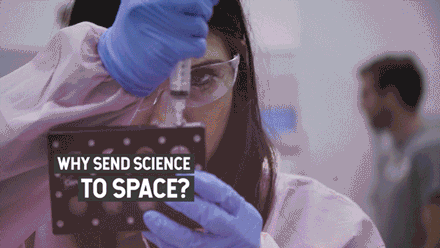
Get ready to go behind the scenes of what it takes to get science to space, and meet the people who make it happen.
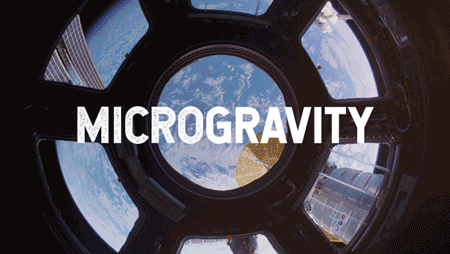
Introducing Season 4 of NASA Explorers: Microgravity. Floating isn’t just fun. Microgravity could open the door to discovery.
youtube
You’ve seen things floating in space, but why does that happen and how does it affect science being conducted aboard the International Space Station?
Microgravity makes the International Space Station the perfect place to perform research that is changing the lives of people on Earth, and preparing us to go deeper into space. This season on our series NASA Explorers, we are following science into low-Earth orbit and seeing what it takes to do research aboard the space station.
Follow NASA Explorers on Facebook to catch new episodes of season 4 every Wednesday!
583 notes
·
View notes
Photo
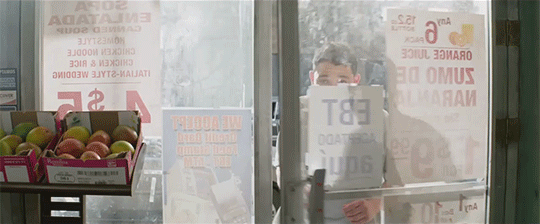
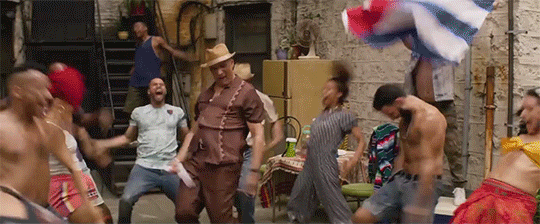

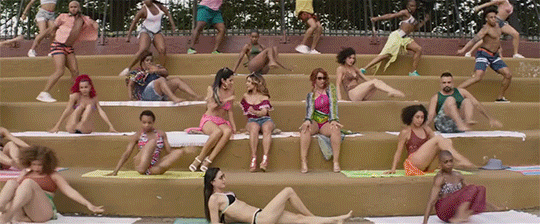
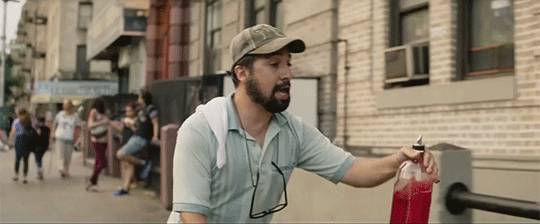
Watch Anthony Ramos and Cast in First Trailer for In the Heights Movie
13K notes
·
View notes
Text
Bringing The Space Station Perspective to Earth in VR!
Only a few humans ever get to experience the awe-inspiring vantage point provided by the space station, but a new virtual reality (VR) experience, Space Explorers: The ISS Experience (ISS Experience), attempts to bring this perspective back to Earth for the rest of us.

Partnering with the ISS National Lab and Time, a team from Felix and Paul Studios launched a high quality 360 degree camera to space to help tell the story of science and life aboard the orbiting laboratory.

The project, currently in the process of being filmed by the station astronauts themselves, serves as an outreach project as well a technology demonstration, testing the limits of filming in the harsh environment of space.

The camera flew to the station on 16th SpaceX commercial resupply services mission in December 2018 along with a number of other scientific experiments.

Since then, the team has recorded many moments, including the SPHERES robots flying around the station (see below) , the growing and harvesting of vegetables, jam session among the astronauts, crew meals and the arrival of new astronauts.

So far, the footage coming back seems to be achieving the goal of immersing audiences in science and life aboard the space station. NASA astronaut Sunita Williams got the chance to watch some of the initial footage and says it was like I was back on the station.

While most of the filming has been completed, the biggest technical challenge is yet to come: capturing a spacewalk in virtual reality. The team expects to launch a new camera for spacewalk filming and begin production of spacewalk filming in 2020.

Learn more about ISS Experience here.
For daily updates, follow @ISS_Research on Twitter, Space Station Research and Technology News or our Facebook. Follow the ISS National Lab for information on its sponsored investigations. For opportunities to see the space station pass over your town, check out Spot the Station.
Make sure to follow us on Tumblr for your regular dose of space: http://nasa.tumblr.com.
707 notes
·
View notes
Text
What’s aboard SpaceX’s Dragon?
On Dec 5. 2019, a SpaceX Falcon 9 rocket blasted off from Cape Canaveral Air Force Station in Florida carrying a Dragon cargo capsule filled with dozens of scientific experiments. Those experiments look at everything from malting barley in microgravity to the spread of fire.

Not only are the experiments helping us better understand life in space, they also are giving us a better picture of our planet and benefiting humanity back on Earth.
📸 A Better Picture of Earth 🌏
Every material on the Earth’s surface – soil, rocks, vegetation, snow, ice and human-made objects – reflects a unique spectrum of light. The Hyperspectral Imager Suite (HISUI) takes advantage of this to identify specific materials in an image. It could be useful for tasks such as resource exploration and applications in agriculture, forestry and other environmental areas.
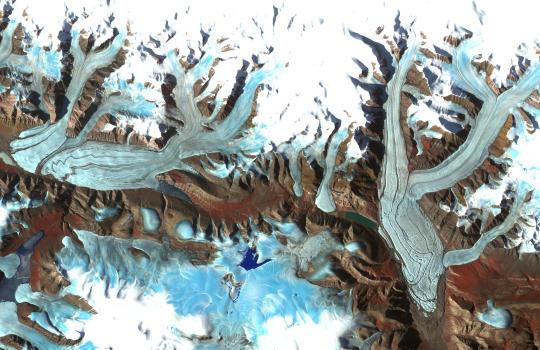
🌱 Malting Barley in Microgravity 🌱
Many studies of plants in space focus on how they grow in microgravity. The Malting ABI Voyager Barley Seeds in Microgravity experiment is looking at a different aspect of plants in space: the malting process. Malting converts starches from grain into various sugars that can be used for brewing, distilling and food production. The study compares malt produced in space and on the ground for genetic and structural changes, and aims to identify ways to adapt it for nutritional use on spaceflights.
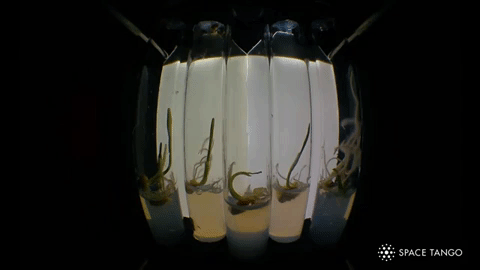
🛰️ A First for Mexico 🛰️
AztechSat-1, the first satellite built by students in Mexico for launch from the space station, is smaller than a shoebox but represents a big step for its builders. Students from a multidisciplinary team at Universidad Popular Autónoma del Estado de Puebla in Puebla, Mexico, built the CubeSat. This investigation demonstrates communication within a satellite network in low-Earth orbit. Such communication could reduce the need for ground stations, lowering the cost and increasing the number of data downloads possible for satellite applications.
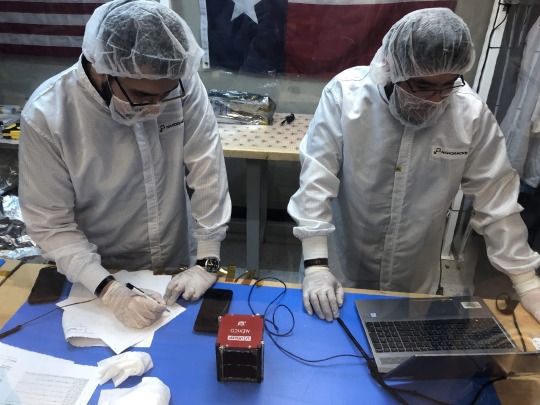
🚀 Checking for Leaks 🚀
Nobody wants a spacecraft to spring a leak – but if it happens, the best thing you can do is locate and fix it, fast. That’s why we launched the first Robotic External Leak Locator (RELL) in 2015. Operators can use RELL to quickly detect leaks outside of station and help engineers formulate a plan to resolve an issue. On this latest commercial resupply mission, we launched the Robotic Tool Stowage (RiTS), a docking station that allows the RELL units to be stored on the outside of space station, making it quicker and simpler to deploy the instruments.

🔥 The Spread of Fire 🔥
Understanding how fire spreads in space is crucial for the safety of future astronauts and for controlling fire here on Earth. The Confined Combustion investigation examines the behavior of flame as it spreads in differently-shaped spaces in microgravity. Studying flames in microgravity gives researchers a chance to look at the underlying physics and basic principles of combustion by removing gravity from the equation.

💪 Staying Strong 💪
Here on Earth you might be told to drink milk to grow up with strong bones, but in space, you need a bit more than that. Astronauts in space have to exercise for hours a day to prevent substantial bone and muscle loss. A new experiment, Rodent Research-19, is seeing if there is another way to prevent the loss by targeting signaling pathways in your body at the molecular level. The results could also support treatments for a wide range of conditions that cause muscle and bone loss back here on Earth.
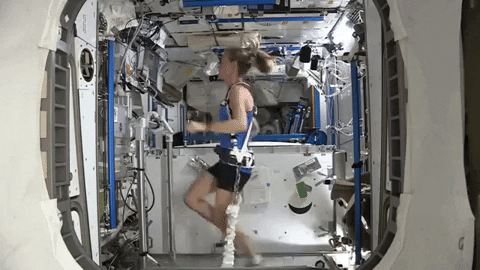
Want to learn about more investigations heading to the space station (or even ones currently under way)? Make sure to follow @ISS_Research on Twitter and Space Station Research and Technology News on Facebook.
If you want to see the International Space Station with your own eyes, check out Spot the Station to see it pass over your town.
Make sure to follow us on Tumblr for your regular dose of space: http://nasa.tumblr.com.
879 notes
·
View notes
Text
Not Your Average Delivery Vehicle
Just like people here on Earth, astronauts get shipments too! But not in the typical sense. 8,200 pounds of cargo, including supplies and scientific experiments, is on its way to the International Space Station thanks to Northrop Grumman’s Cygnus cargo spacecraft. This ‘package’ launched out of Wallops Flight Facility on Nov. 2, 2019 at 9:59 a.m. EDT. The investigations aboard the rocket range from research into human control of robotics in space to reprocessing fibers for 3D printing. Get ready, because these new and exciting experiments are arriving soon!

THE SEARCH FOR DARK MATTER
Stars, planets and their molecules only make up 15% of our universe. The rest is dark matter. However, no one has actually ever been able to see or study it. The Alpha Magnetic Spectrometer -02 (AMS-02) has been searching for this substance since 2011. Northrop Grumman’s CRS-12 mission carries new parts for AMS-02 that will be added during a series of upcoming spacewalks so that the instrument can continue to help us shed light on this mystery.

THE REMOTE EXPLORATION OF EARTH
Rovers operated by astronauts on the International Space Station will attempt to collect geological samples on Earth as part of an investigation called ANALOG-1. The samples, however, are not the important part of the study. Humans experience degraded sensorimotor functions in microgravity that could affect their operation of a robot. This study is designed to learn more about these issues, so that one day astronauts could use robots to perform research on planets they hope to walk on.

WOAH, THAT’S RAD
The AstroRad Vest is pretty rad. So rad, in fact, that it was sent up on the launch of Northrop Grumman’s CRS-12 mission. This vest intends to protect astronauts from harmful radiation in space. While going about normal activity on the space station, astronauts will wear AstroRad and make note of things like comfort over long periods of time. This will help researchers on Earth finalize the best design for future long duration missions.

EVEN ASTRONAUTS RECYCLE
The Made in Space Recycler (MIS) looks at how different materials on the International Space Station can be turned into filament used for 3D printing. This 3D printing is done right there in space, in the Additive Manufacturing Facility. Similar studies will be conducted on Earth so that comparisons can be made.

FASTER, CHEAPER ACCESS TO SPACE
A collaboration between Automobili Lamborghini and the Houston Methodist Research Institute will be using NanoRacks-Craig-X FTP to test the performance of 3D-printed carbon fiber composites in the extreme environment of space. The study could lead to materials used both in space and on Earth. For example, the study may help improve the design of implantable devices for therapeutic drug delivery.

DESSERT, FRESH FROM THE OVEN
Everyone enjoys the aroma of fresh-baked cookies, even astronauts. On future long-duration space missions, fresh-baked food could have psychological and physiological benefits for crew members, providing them with a greater variety of more nutritious meals. The Zero-G Oven experiment examines heat transfer properties and the process of baking food in microgravity.

Want to learn about more investigations heading to the space station (or even ones currently under way)? Make sure to follow @ISS_Research on Twitter and Space Station Research and Technology News on Facebook.
If you want to see the International Space Station with your own eyes, check out Spot the Station to see it pass over your town.
Make sure to follow us on Tumblr for your regular dose of space: http://nasa.tumblr.com.
953 notes
·
View notes
Photo










Callahan Ceramics on Instagram
Follow So Super Awesome on Instagram
7K notes
·
View notes
Text
The return of the Dragon 🐉
One month ago, SpaceX’s Dragon capsule arrived at the International Space Station. Now it’s time for the Dragon to come home. The return trip, a crucial part of its mission, brings scientific hardware, data and experiments down to waiting researchers.
Check out a few of the pieces of research taking that ride back to Earth.

A cinematic look at life and science aboard the space station
You may one day get to experience the product of The ISS Experience. A team is creating a cinematic virtual reality (VR) film from footage taken during in space covering crew life, execution of science and the international partnerships involved on the space station.

Every week or so, footage is transferred from the camera onto solid state drives – an original and a backup – for storage and downlinking. One of each pair of drives returns to Earth for editing and production.
Seeking Alzheimer’s understanding in microgravity
Amyloid fibrils, a conglomeration of proteins that can build up in the body, are associated with a number of neurodegenerative diseases such as Alzheimer’s and Parkinson’s diseases. The Amyloid Aggregation investigation assesses whether microgravity affects formation of these fibrils.

Samples exposed to microgravity are coming back to Earth using a facility that maintains a chilly temperature of -20°C. Teams on the ground must quickly retrieve the equipment and keep the samples at -20°C until they are analyzed.
The SPHERES return home
Synchronized Position Hold, Engage, Reorient, Experimental Satellites, or SPHERES, are bowling-ball sized satellites used to study formation flying, control algorithms and material science.

First sent to the station in 2006, these satellites have been employed in a dozen different investigations.

The Dragon brings back hardware from two recent experiments that examined the behavior of fluids in microgravity, SPHERES Tether Slosh and SPHERES-Slosh.
From microgravity lab to manufacturing facility
The Fiber Optic Production investigation created optical fibers on the space station using a blend of materials called ZBLAN to see whether making the fibers in microgravity has advantages over the process used on Earth. ZBLAN optical fibers offer high bandwidth for the telecommunications industry, and potential applications for uses like laser surgery and environmental monitoring.

The fiber produced on the space station is coming to Earth for testing to help verify previous studies and guide future efforts to manufacture large volumes of such fiber in microgravity.
Read more about the science returning on Dragon here!
For daily updates, follow @ISS_Research, Space Station Research and Technology News or our Facebook. Follow the ISS National Lab for information on its sponsored investigations. For opportunities to see the space station pass over your town, check out Spot the Station.
Make sure to follow us on Tumblr for your regular dose of space: http://nasa.tumblr.com.
736 notes
·
View notes











